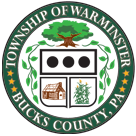Stormwater Management
What is Storm Water?
Storm water is water from precipitation that flows across the ground and pavement when it rains or when snow and ice melt. The water seeps into the ground or drains into what we call storm sewers. These are the drains you see at street corners or at low points on the sides of streets. Collectively, the draining water is called storm water runoff.
Why is Storm Water “Good Rain Gone Wrong?”
Storm water becomes a problem when it picks up debris, chemicals, dirt, and other pollutants as it flows or when it causes flooding and erosion of stream banks. Storm water travels through a system of pipes and roadside ditches that make up storm sewer systems. It eventually flows directly to a lake, river, stream, wetland, or coastal water. All of the pollutants storm water carries along the way empty into our waters, too, because storm water does not get treated!
Pet wastes left on the ground get carried away by storm water, contributing harmful bacteria, parasites and viruses to our water. Click here for information.
Vehicles drip fluids (oil, grease, gasoline, antifreeze, brake fluids, etc.) onto paved areas where storm water runoff carries them through our storm drains and into our water.
Chemicals used to grow and maintain beautiful lawns and gardens, if not used properly, can run off into the storm drains when it rains or when we water our lawns and gardens.
Waste from chemicals and materials used in construction can wash into the storm sewer system when it rains. Soil that erodes from construction sites causes environmental degradation, including harming fish and shellfish populations that are important for recreation and our economy.
Restoring Rain’s Reputation: What Everyone Can Do To Help:
Rain by nature is important for replenishing drinking water supplies, recreation, and healthy wildlife habitats. It only becomes a problem when pollutants from our activities like car maintenance, lawn care, and dog walking are left on the ground for rain to wash away. Here are some of the most important ways to prevent storm water pollution:
- Properly dispose of hazardous substances such as used oil, cleaning supplies and paint—-never pour them down any part of the storm sewer system—-report anyone who does.
- Use pesticides, fertilizers, and herbicides properly and efficiently to prevent excess runoff.
- Look for signs of soil and other pollutants, such as debris and chemicals, leaving construction sites in storm water runoff or tracked into roads by construction vehicles. Report poorly managed construction sites that could impact storm water runoff to your community.
- Install innovative storm water practices on residential property, such as rain barrels or rain gardens, that capture storm water and keep it on site instead of letting it drain away into the storm sewer system.
- Report any discharges from storm water outfalls during times of dry weather—-a sign that there could be a problem with the storm sewer system.
- Pick up after pets and dispose of their waste properly. No matter where pets make a mess—-in the backyard or at the park—-storm water runoff can carry pet waste from the land to the storm sewer system to a stream.
- Store materials that could pollute storm water indoors and use containers for outdoor storage that do not rust or leak to eliminate exposure of materials to storm water.
Stormwater Information provided by Pennsylvania Department of Environmental Protection, “When it Rains, it Drains” brochure.
Stormwater Links:
DEP Stormwater Management Program
DEP Homepage
EPA Stormwater Program
EAP Homepage
PA Environmental Quality Board
MS4 Pollutant Reduction Plan
EPA Websites:
EPA Water Pollution Prevention and Control
EPA Stormwater Homepage
EPA MS4 Main Page
National Menu of Stormwater Best Management Practices
Stormwater Outreach Materials and Reference Documents
MS4 Fact Sheet
Polluted Runoff: Nonpoint Source Pollution
